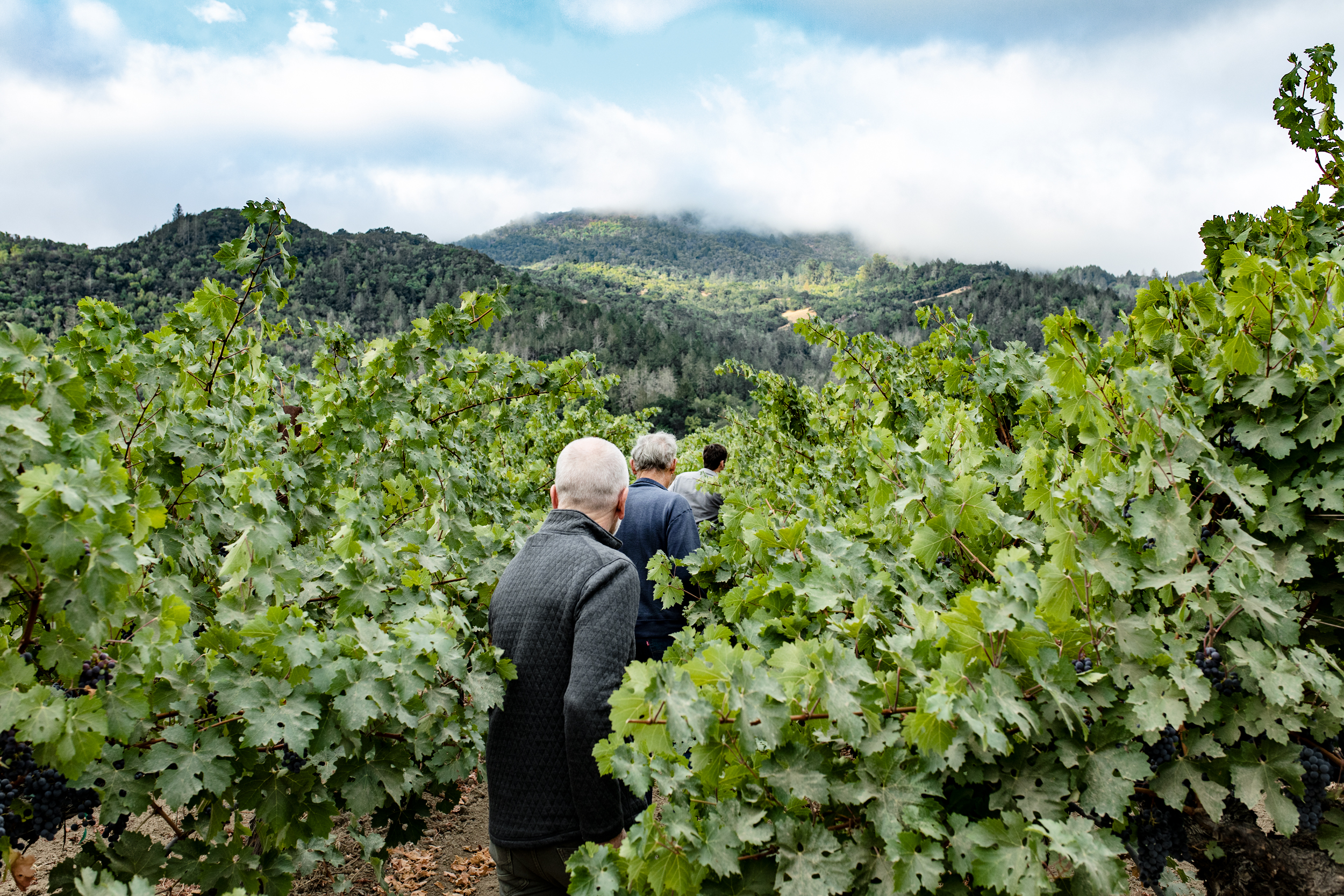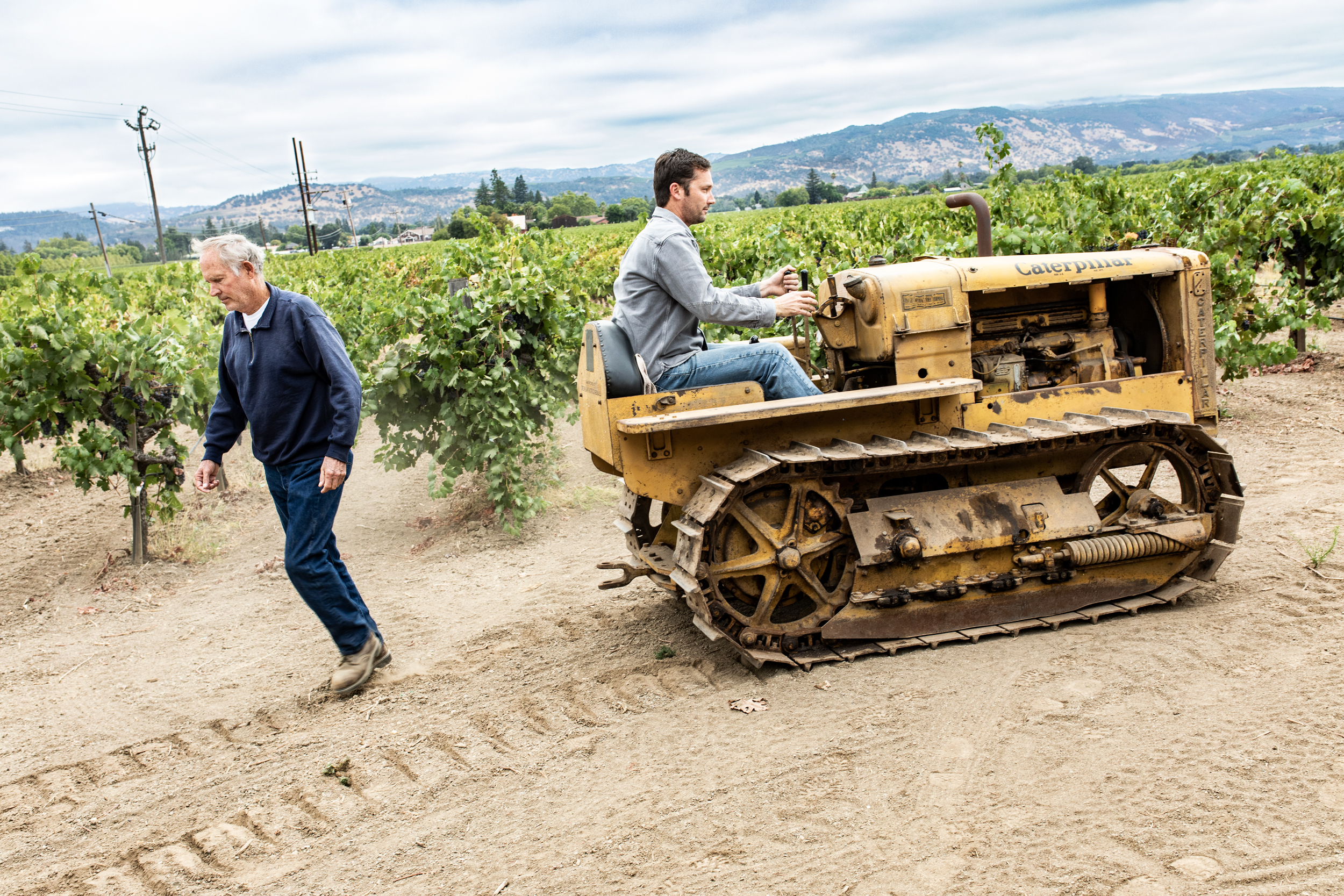29th Jan 2024
I’m a sucker for ancient vines. Stopping beside a plot of old timers, getting out of the car, and walking a row are my secrets to stress reduction during a hectic day of winery visits and tastings. I like to think that the older a vine gets, the more anthropomorphic it becomes and the more it whispers stories about its origins. According to the Historic Vineyard Society, there are only nine sites planted before 1920 left in Napa Valley. Morisoli Vineyard’s two-acre “Old Block,” planted in 1902, is one of them. So, when fifth-generation grower Christopher Morisoli invited me for a tour of his family’s vineyard, I jumped at the chance.

History in the Making
“Our oldest block was planted in the early 1900s by my grandfather, Plinio,” says current owner Gary Morisoli (Christopher’s father) as we stroll through this shrunken forest of beautifully gnarled, thick-trunked, free-standing vines. “This is a field blend of Zinfandel, Petite Sirah, Alicante Bouschet, Carignan, Syrah, Black Muscat, and a bunch of other stuff.”
It’s a warm, sunny September day. Harvest is still a few weeks away, and these sturdy workhorses are thriving with verdant, lush canopies laden with healthy crops. The average yield for this block is around two tons per acre, which is remarkable considering the vines are 120 years old.
“It’s believed that the cuttings for this came from the Gate Vineyard at Inglenook, which is now gone,” Gary tells me. “Our vineyard was first planted in the 1880s but fell victim to phylloxera. This all on St. George rootstock.”


UC Davis has taken cuttings from this block, eradicated any viruses, and propagated the vines, now known as the Morisoli Clones.
“Elyse Winery used to get the fruit from here,” Christopher mentions as we head back to the house for a tasting. “But their last year of purchasing was 2022. From this year (2023), we’ll start making our own wine from this block.”
This exciting news is literally history in the making.
As one of the oldest remaining family-owned growers in Napa Valley, the “Old Block” is an important piece of the Morisoli family’s heritage, not to mention Napa’s. The same house has been in the family since the 1880s. In 1883, Gary’s Swiss-Italian great-grandfather, Rocco, emigrated from Switzerland. He started planting vines in 1902. Plinio, his son, owned the Rutherford General Store, which is now the Rutherford Grill.
Located along Niebaum Lane in Rutherford, bordering Inglenook and Scarecrow, Morisoli Vineyard encompasses 53 contiguous acres with 51 planted to vines. Most of the vineyard is now Cabernet Sauvignon and most of the fruit is sold to top wineries around the valley, including Amici, Robert Biale, Elyse, Etude, Sequoia Grove, V. Sattui, and others. In 2018, the Morisolis started bottling a tiny proportion of the Cabernet Sauvignon they grow (less than 2%) under their own label. Their winemaking consultant is Joel Aiken, who purchased Morisoli fruit when he was the winemaker at Beaulieu Vineyard and later when he made his own “Aiken” label from 2009 to 2014.
"The wine gets two years in barrel," says Joel. "It’s about 60% new oak. Then, it gets two years in bottle before release. It needs time."
The 2019 was recently released to their mailing list, and the Morisolis also sell to a few local shops. Quantities are tiny—currently, less than 200 cases per year are made.

The Cabernet Sauvignon 2018, 2019, and 2020 each reveal wonderful restraint with taut, muscular fruit and plenty of savory/earthy nuances. These are wines built for cellaring. As I mention this, Gary begins pulling wines from his cellar—all Morisoli Vineyard Cabernet Sauvignons made by different wineries over the years: 2013 Aiken Cabernet Sauvignon, 2008 Elyse Cabernet Sauvignon Morisoli Vineyard, 2007 V. Sattui Cabernet Sauvignon Morisoli Vineyard, 2000 Corison Napa Valley Cabernet Sauvignon, and 1990 Whitehall Lane Cabernet Sauvignon Morisoli Vineyard. Wow. These wines clearly demonstrate the age-ability of the fruit from this historic vineyard, and I’ve included the tasting notes with this article.
While the Morisolis remain first and foremost growers, I can’t wait to follow the progress of this family as they continue to develop their own label.

PRODUCERS IN THIS ARTICLE
> Show all wines sorted by scoreMore articles

Cathiard Vineyard New Releases
02nd May 2024
3 tasting notes

Bordeaux 2023 Preliminary Vintage Report and Reviews from Barrel
29th Apr 2024
56 tasting notes

2021 Bordeaux in Bottle and A Modest Proposal
24th Apr 2024
599 tasting notes

Pilcrow’s New Releases
18th Apr 2024
7 tasting notes
Show all articles